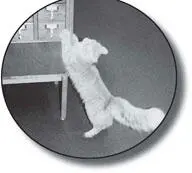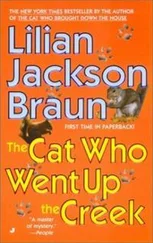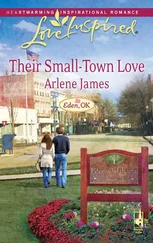The old family farmers raised livestock. They planted gardens. They grew crops in distinct, smaller fields. On the large new farms, there was only corn and its companion crop, soybeans. Every year Iowa grew more corn, but we ate less and less of the crop, at least as kernels and cobs. Most was used as animal feed. Some eventually became ethanol. The rest was separated, broken down, and processed. Have you ever wondered what xanthan gum is? It’s processed corn, like almost everything else in that long list of unidentifiable ingredients printed on the packaging of your dinner. Seventy percent of the average American diet—70 percent!—is corn.
But life in farm country isn’t easy. A few large farms are worth a fortune, but for most farmers and the people who rely on them—farmhands, salesmen, storage facilities, processing plants, local merchants—the money is tight, the work is hard, and life is often beyond your control. If it doesn’t rain; if it doesn’t stop raining; if it gets too hot or too cold; if prices don’t hold up when your product hits market, there’s not much you can do. Farm life isn’t forty acres and a mule anymore. Farmers need large combines to plow big fields, and they can cost $500,000 or more. Throw in seed, chemicals, and living expenses, and a farmer’s debt can easily top a million. If they stumble, or fall behind the times, or simply have a run of bad luck, most can’t make it.
The same is true of the towns in farm country. Towns are, after all, a collection of people. The town relies on the people; the people rely on the town. Like the pollen and the corn silk, they are interdependent. That’s why the people of northwest Iowa take such pride in their towns. That’s why they invest so much energy in making their towns work. They plant trees; they build parks; they join community organizations. They know if a town is not constantly looking ahead, it can fall behind, and then it can die.
Some people think the grain elevator burning down in the 1930s ruined the town of Moneta. I think it was the closing of the Moneta School. After the Jipson kids started being bused ten miles away to Hartley in 1959, Dad lost interest in struggling against the farm. Our land didn’t produce, and Dad couldn’t afford big new machinery. He joined a cattle-buying business, then started selling insurance. The Jipsons had been on the farmstead for three generations, but two years after the Moneta School closed Dad sold out to a neighbor and went into insurance full-time. He hated it, hated having to use scare tactics and lowball families in their time of need. He ended up working as a salesman for Crow brand seed. The neighbor who bought our land leveled our farmhouse, chopped down our trees, and turned the entire 160 acres into farmland. He even straightened the creek. I often drive by now without even recognizing it. The first four feet of our dirt driveway is all that remains of my childhood.
Drive fifteen miles west of Spencer today and there’s still a sign on the side of the road for Moneta. Turn left. Two miles down the pavement ends, leaving only a dirt track running between the fields. But there isn’t a town. There are maybe fifteen houses, at least half of them abandoned. There isn’t a single business to be seen. Almost all the buildings on the old downtown strip I remember from my childhood are gone, replaced by a cornfield. You can stand at the former spot of the Moneta general store, where kids would stand transfixed in front of the giant counter full of penny candies and whistles, and watch the cultivators, cone-shaped chutes in front and barrels of fertilizer and poison strapped on the back, crawl across fields like tiny grasshoppers tiptoeing across a vast emptiness. The dance hall remains, and the old speakeasy, but both are shuttered. In a few years, they’ll probably be gone, too.
The Moneta School still stands behind, but volunteer trees are growing between the bricks. Most of the windows are broken. Goats lived in the building for a decade, wrecking the floors and biting holes in the walls, and you can still smell them. The only thing left is the reunion. Forty years after the closing of the Moneta School, the annual reunion still drew a thousand people a year back to the field where we used to hold those baseball games and end-of-the-year parties. Now the reunion is down to a hundred or so. The school has been closed fifty years; there aren’t that many graduates left. Soon the sign on Highway 18 will be the last thing standing, still pointing two miles down the lonely road to Moneta.
Chapter 7
Grand Avenue

The farm crisis of the 1980s was hard, but most of us never truly believed Spencer would go the way of Moneta. We never believed it would give up, blow away, disappear. Throughout its history, after all, the town had proved its resilience. Nothing had ever been handed to Spencer or its citizens. What we’d gotten, we’d earned.
Spencer started as a sham town. In the 1850s, a developer sold numbered lots on a large parcel near a bend in the Little Sioux River. The settlers expected a prosperous town in a fertile river valley, but they never found it. There was nothing but a lazy river and a single cabin—four miles away. The only place a town existed was on paper.
The homesteaders decided to stay. Instead of coming to an established town, they scratched a community out of the dirt. Spencer incorporated in 1871 and immediately petitioned the government for a railroad depot, which it wouldn’t get for almost fifty years. Later that year, it wrested the seat of Clay County away from Petersen, a larger town thirty miles to the south. Spencer was a blue-collar town. It didn’t have pretensions, but it knew that out here on the Plains, you have to keep moving, modernizing, and growing.
In June 1873, the grasshoppers arrived, devouring the crops down to the stalks before moving on to the harvested grain. In May 1874, the grasshoppers returned. They came again in July 1876, just as the wheat was ripening and the corn coming into tassel and silk. As described in The Spencer Centennial , an account of the community written for our hundredth anniversary, “the grasshoppers ate the heads off the grain and settled on the corn until they broke it down with their weight. There was complete destruction.”
Farmers abandoned the area. Town residents turned their homes and businesses over to their creditors and left the county. Those who remained pulled together and helped one another through a long and hungry winter. In the spring they scraped together enough credit to buy seed for a full planting. The grasshoppers ate their way to the western edge of Clay County, about forty miles away, but they came no farther. The crop of 1877 was the best the area had ever produced. The grasshoppers never returned.
When the first generation of homesteaders became too old to farm, they moved into Spencer. They built small Craftsman bungalows north of the river, mixing with the merchants and hired hands. When the railroad finally arrived, local farmers no longer had to drive a horse and buggy fifty miles to market. Now other farmers drove twenty miles to Spencer. The town celebrated by widening the road from the river to the train depot. Those eight blocks, christened Grand Avenue, became the main retail corridor for the entire region. There was a savings and loan downtown, a popcorn factory on the north side near the fairgrounds, a concrete block factory, a brick works, and a lumberyard. But Spencer was not an industrial town. There were no large industrial facilities. There were no diamond-studded, twenty-dollar-bill-smoking frontier financiers. There was no row of Victorian mansions. There were the fields, the farmers, and the eight blocks of businesses under our enormous blue Iowa sky.
Читать дальше













